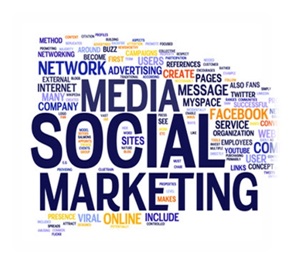
by Editor | May 25, 2021 | Business, Entrepreneurship, Marketing Basics, Markets, Online Marketing, Social Entrepreneur

By Saif Alam siddiqui, for Maeeshat
To begin with the topic let us understand the term “Social media is computer-mediated apparatus which allow people to create and exchange, information, ideas in the form of pictures/videos or text within virtual domain”. Social Networking allow individuals to interact with one another beyond the boundaries. When business join these social channels, consumers can interact with them directly which can be more personal to users than traditional methods of outbound marketing &advertising.
Social Media Marketing is the process of boosting website traffic through social media sites most common are Facebook, twitter, LinkedIn, Instagram.It focus on the creation of contents which fascinate and encourage the target audience to share across their social Network however this contents are organic in reach and it reaches by the frequency of clicks, likes or share through this phenomena a vast amount of data can be captured by analysing the fan base, content they like share or comment the current market trend and segment can be analysed bycertain analytical tools marketers can detect buying signals, such as content shared by people and questions posted online understanding of this signals can help sales people target relevant prospects and marketers to run targeted campaigns.
As social media is emerging day by day, and those not running with it have found it increasingly difficult to survive in this digital era it is being used by an estimated more than 76% of businesses today. Until now Business have spent years in the traditional social media marketing approach by organic engagement but the recent trend is charged and it’s not enough to create Instagram Facebook or LinkedIn Pages and get some likes or retweet. Now a days Social Media sites have initiated paid services to boost up the contents with paid Ads and sponsored contents business can reach beyond organic loyal or traditional social media fan which organically boost up the bottom line it can check the appropriate target audience reach for a proper market penetration.
Now let us see the types of social Media which serve distinct purpose:
- Owned/Organic – Brand controls the channel e.g.: Web/mobile site- Blog-Twitter.
- Paid– Brand pays to leverage a channel e.g.: Twitter ads (promoted tweets, promoted accounts) – Facebook page promotion (boosted posts, Facebook offers) – LinkedIn sponsored updates.
- Earned – Customer becomes the channel e.g.: Brand buzz – “Viral” content- Organic shares.

Source: http://blog.hootsuite.com/paid-earned-strategy
Paid social media (often referred to as “integrated social advertising”), is just that: A brand pays to social media channel to promote its message, service or product. By controlling the content, targeting and placement.After this your social media channel suddenly looks like the avenue for prospective customers andcontent can be directed to people who are more likely to engage.
The first question hunt social media marketer is that how far the investment is going to be profitable?
Let me explain the cost of Social media marketing by graphical presentation.
From the graph it is crystal clear that howaffordable social media isin deciding marketing strategy as compared to other source with same impact.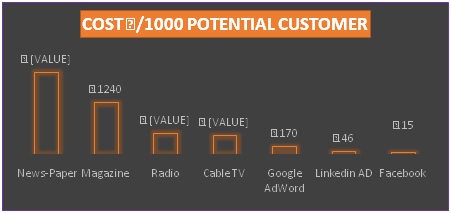
Source:(www.socialmediatoday.com)
For sure Business are using free social media but when analysed executed effectively, paid social media can give you a huge return on marketing expenditure. The sponsored content is targeted to the right market segment and it’s effective and profitable.
Main effective key points to love about social Media in its paid form:
Business can:
- Improve lead generation
- Control brand message and its delivery
- Increase validity of content
- Reach a broad, targeted audience
- Boost organic engagement
For sure Social media moves fast and need to analysed properly to make maximum of it now a days an ever-increasing cacophony of social media channels, it’s become difficult to get message out to the right people, let you alone decide by yourself about its impact on your business and choosing Social Media Marketing Campaign strategy.
The writer is Founder of www.tizarat.com he can be reached saifalam89@gmail.com
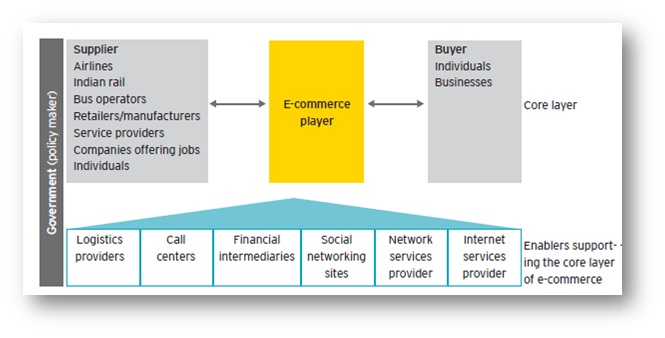
by Editor | May 25, 2021 | Business, News, Opinions
 By Saif Alam Siddiqui, for Maeeshat,
By Saif Alam Siddiqui, for Maeeshat,
While it’s possible to make money online via a number of businesses — blogging, software, affiliate marketing, etc. Electronic Commerce is also one of the tools among them.
Introduction: Electronic commerce, frequently known as e-Commerce When I say “e-Commerce,” I mean a site that sells physical products to customers, is a type of industry where the buying and selling of products or services is conducted over electronic systems such as the Internet and other computer networks.
E-commerce draws on technologies such as mobile commerce, electronic funds transfer, supply chain management, Internet marketing, online transaction processing, electronic data interchange (EDI), inventory management systems, and automated data collection systems. Modern electronic commerce typically uses the World Wide Web at least at one point in the transaction’s life-cycle, although it may encompass a wider range of technologies such as e-mail, mobile devices, social media, and telephones as well. Electronic commerce is generally considered to be the sales aspect of e-business. It also consists of the exchange of data to facilitate the financing and payment aspects of business transactions. This is an effective and efficient way of communicating within an organization and one of the most effective and useful ways of conducting business.
e-commerce Market :
The e-Commerce market in India has enjoyed remarkable growth of almost 50% in the last five years. Although the trend of e-Commerce has been making rounds in India for 15 years, the appropriate ecosystem has now started to come on track. The considerable rise in the number of internet users, growing acceptability of online payments, the proliferation of internet-enabled devices and favorable demographics are the key factors driving the growth story of e-Commerce in the country.
The e-Commerce transactions can be segmented into three broad categories or modes, based on participants involved in the transaction.

Business-to-Consumer (B2C): The B2C market in India generates the bulk of revenues across the consumer-facing modes of e-Commerce. Furthermore, though online travel has typically held a major share of the B2C market, online retail is also growing rapidly and is expected to significantly increase its share.
Consumer-to-Consumer (C2C): India’s C2C market, though currently small, is set to grow with the entry of several players. These entrants are attracting VC investment. Their online portals are also garnering significant traffic. We expect the C2C segment to show rapid growth in coming years.
Business-to-Business (B2B): The most common users of B2B online classifieds are micro, small and medium enterprises (MSMEs). These small businesses lack the requisite financial resources and, therefore, find it difficult to market their products and services to potential clients through traditional media such as newspapers, banners and television. Trade through online B2B portals increases the visibility of MSMEs in the marketplace and helps them overcome barriers of time, communication and geography.
Key stakeholders
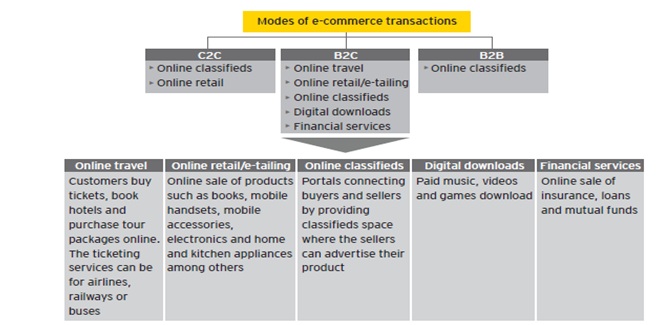
Multiple stakeholders are engaged in the e-Commerce sector.
The supplier list is set to grow, with a number of businesses and individuals looking to join the e-Commerce bandwagon. The customer/buyer has become the focal point for e-Commerce players. In this background, enablers such as logistics players and call centers are widening and evolving their offerings to align them with the strategies of e-Commerce players. To gain an edge and differentiation power, all the key stakeholders are engaging in innovation to provide a rich experience to their customers.
These stakeholders coordinate among each other to facilitate the three main flows in an e-Commerce transaction:
Product flow: movement of goods from suppliers to end consumers through e-Commerce and logistic players
Information flow: Information transmission of orders from customers and subsequent information flow of order status through the value chain
Monetary flow: payments from consumers to e-Commerce players and/or suppliers and vice-versa through financial intermediaries
Emerging business models in India
The number of users making online transactions has been on a rapid growth trajectory, and it is expected to grow from 22 million in 2012 to 38 million in 2015. Venture capitalists (VC) and private equity players have demonstrated their faith in the growth of e-Commerce in the country. This is amply substantiated by the significant increase in the total investments (US$305 million in 2011 against US$55 million in 2010). Online travel has traditionally been the largest e-Commerce sub-sector (by revenue) in India. Nevertheless, online retail is catching up fast and is expected to match online travel revenues by 2015.
e-Malls or e-Marketplaces: An electronic mall (e-Mall) or e-Marketplace provides a platform for merchants to set up virtual stores and sell their merchandise. Merchants frequently choose this option due to the advantages of reduced cost and the complexity of putting products up for sale on the web. They also benefit from leveraging websites (e-mall) traffic and user base, given the expectation that visiting other stores on the e-mall would lead to visits to their stores as well. Smaller merchants also look to leverage the brand name of the e-Marketplace, based on the premise that this would lead to increased trust and, therefore, readiness on customers’ behalf to buy products online. Larger merchants sell their products through these virtual stores, in addition to their own sales channels. Product pricing is not controlled by e-Commerce players and is decided by merchants. For the purpose of billing, merchants use the common payment gateway/method provided by the e-Commerce player hosting the platform. These marketplaces allow consumers to sell products directly to other consumers, either at a fixed price or through auctions. e-Commerce players allow monetary exchange through offering payment modes on their websites or proposing direct payment by buyers to sellers. Membership or subscription fees from sellers setting up virtual stores, and commission charges on transactions and advertising fees are various revenue sources for e-Commerce players.
There are two models evolved within e-Stores with respect to inventory management:
1.Consignment model:
Ships products directly from the vendor to the customer with no investments in warehouses and logistics e-Commerce in India is traditionally a low-entry barrier business, with most e-Commerce working on a consignment model based on the following principles:
• e-Commerce tie up with networks of merchants to source products.
• They then prepare web catalogs of products offered by their partner merchants.
• Once a customer order is received for any of the catalog items, a notification is sent to the merchant for its fulfillment.
• The merchant then supply the goods to the customer, and financial settlement is made between the e-Commerce and the merchant for the products sold.
2.Stock-and-sell model: Assumes inventory risk and invests in warehouses and logistics.
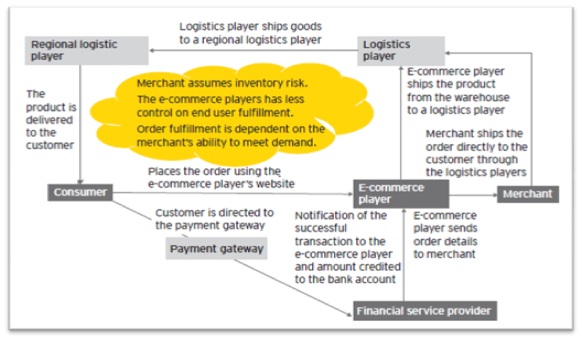

Analysis
The online retail segment has evolved and grown significantly over the past few years. Cash-on-delivery has been one of the key growth drivers and is touted to have accounted for 50% to 80% of online retail sales. Players have adopted new business models including stock-and-sell, consignment and group buying; however, concerns surrounding inventory management, location of warehouses and in-house logistics capabilities are posing teething issues. Classifieds, the earliest entrant in the e-Commerce space in India, is undergoing a shift in operational model from vertical to horizontal offering. Players now offer a gamut of services ranging from buying/selling cars to finding domestic help/babysitter. To ensure that e-Commerce maintains the steam that it has gained in recent years, the government needs to focus on the regulatory front. Unlike many other countries, India still does not have dedicated e-Commerce laws. The Sales Tax laws need to be revised, as they are posing issues for online retailers while they decide warehouse location. e-Commerce is set to continue on its growth path on the back of the stabilization of the ecosystem and interest demonstrated by VC players, combined with support from the Government of India.
Author to be contacted at Saifalam89@gmail.com
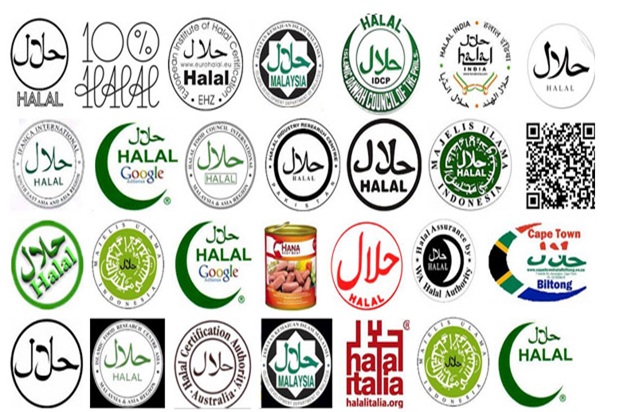
by Editor | May 25, 2021 | Islamic Finance, News
 By Saif Alam Siddiqui for Maeeshat
By Saif Alam Siddiqui for Maeeshat
Soon there is a faculty to be arrived by a new “configuration” in the world of Branding and marketing – and it is glowing green; not the accustomed grass green of environment, but the green submerged with the spirit of Islam.
‘Islamic Branding’ is a relatively new concept, and at the birth of this new field of learning which is receiving serious public attention. Islamic Branding can be defined as “branding that’s empathetic to Shariah values, in order to appeal to the Muslim consumer, ranging from basic Shariah friendliness to full Shariah compliance in all aspects of a brand’s identity, behavior and communications”. The global Muslim market represents enormous opportunities for companies from any country, whether Islamic or non-Islamic, but all face challenges.
The statistics revels a clear picture that about 23% of the world’s population is Muslim. In empirical terms, a market of 1.9 billion across 112 countries, is Hungry for Halal Food. Statistics also make marketers dribble – of that 1.9 billion, 43% are under the age of 25. That’s equal to about 10% of the world’s absolute population. And there’s more to come. The Muslim population is expected to increase by 26% to 2030 to approximately 2.2 billion. Muslims currently have a 7.7% share of global GDP which is expected to grow to 8.7% by end-2016.
The halal market alone is worth a staggering US$2.1 trillion (including food and beverage at 67%, pharmaceuticals at 22%, personal care and fashion at 10%) a year and is increasing at US$500 billion a year due to the growth of the global Muslim population. In terms of services, the assets of Islamic banks and financial institutions worldwide are predicted to reach USD $1 trillion by next year and USD $1.8 trillion by 2016. The Muslim consumer market of 1.9billion is undeniably the next important (and largely untapped) global opportunity. As China and India have captured the attention of the world’s marketers in recent years, a quiet but enormous business potential lies largely untapped in the global Muslim consumer market today.
A Brand which is friendly or compliant with Shariah principles naturally embodies many of the values that global businesses are feeling the pressing need to communicate today. Values such as honesty, respect, consideration, kindness, peacefulness, authenticity, purity, patience, discipline, transparency, modesty, community, dignity are core to the principles of Shariah and resonate deeply with Muslim consumers across the world. In the recent time Muslim consumers have highlighted their importance as an attractive market segment.
Why Islamic Branding?
A market of 1.9 billion people that has scarcely been tapped, Muslim consumers offer enormous potential to marketers – but only if their values are fully understood. From a market panorama it is always good to give consumers what they categorically want, and Muslims are a significant market segment that has not been studied and understood. In recent years global marketers have started to enthuse over the size of this prize and think on the importance of cracking it – but the challenge is in managing it knowledgeably, sensitively, and profitably for the long term. Western brands have the marketing and branding expertise but often lack the cultural awareness and civic knowledge to penetrate Islamic markets successfully. They have to work harder with local market research and accreditation agencies. Companies from Muslim countries have a clump of branding opportunities, ranging all the way from products to companies and organizations and even national identities, and their advantage lies in their understanding of what Muslims want. But they admit to not having enough branding and marketing knowledge and skill to do the job properly and executive education is a key priority for them.
When I use the words ‘Islamic Branding and Marketing’ I am referring not just to brands that originate from Islamic countries, although of course they would come under such a definition, but also to any brands that are seeking to address the needs of Muslim markets. When referring to any activity related to the branding and marketing of countries, products and services to Islamic audiences, regardless of whether or not they reside in Muslim majority or Muslim minority countries or have Muslim ownership. Green Branding does not restrict to the branding and marketing to Muslim owned businesses, but also includes companies that do not have Islamic owners yet are reaching out to Muslim consumers. Thus, non-Muslim brands would also come under this heading if they were looking to build their brands and market share in any Muslim majority or minority market. Indeed, several brands that are meeting the needs of global Muslim audiences currently are from non-Muslim, often Western, companies.
Despite the heterogeneity of the Muslim populations with majority and significant minority domain in some 57 countries around the world, Islam constantly bonds together their daily lives and influences their consumption habits, through the centrality of faith. Muslims’ own belief in the significance of Islam in their lives is general. On the other hand it is very helpful for brands to align to the values of religion in order to appeal to the population. As the Islamic world explodes economically, the appetite for value‐empathetic brands suddenly faces exponential increase.
My view is that these challenges will be overcome on both sides. Western brands are already moving ahead with some force and the huge multinationals will undoubtedly continue to gain market share if they learn to understand Islamic values, and there are early signs of success that brands developed in the Muslim world are quickly gaining experience in international marketing. There is no doubt in my mind that the next wave of brand development and success will come from the global Islamic market.
(Saif Alam Siddiqui can be contacted at saifalam89@gmail.com)









